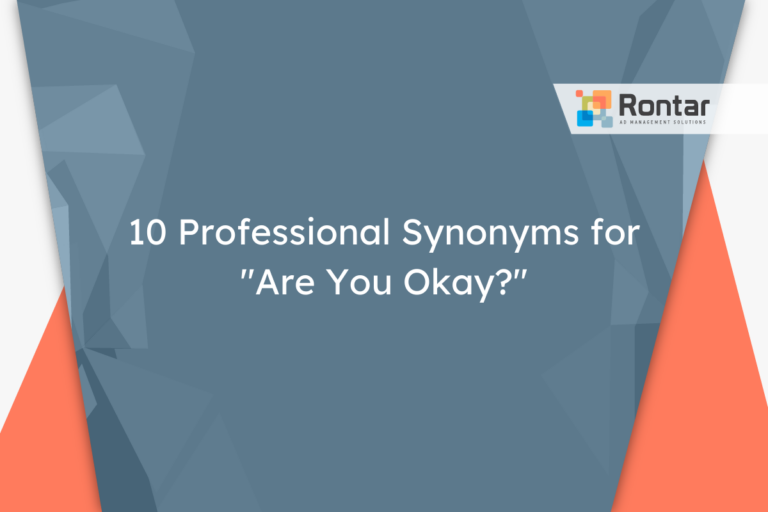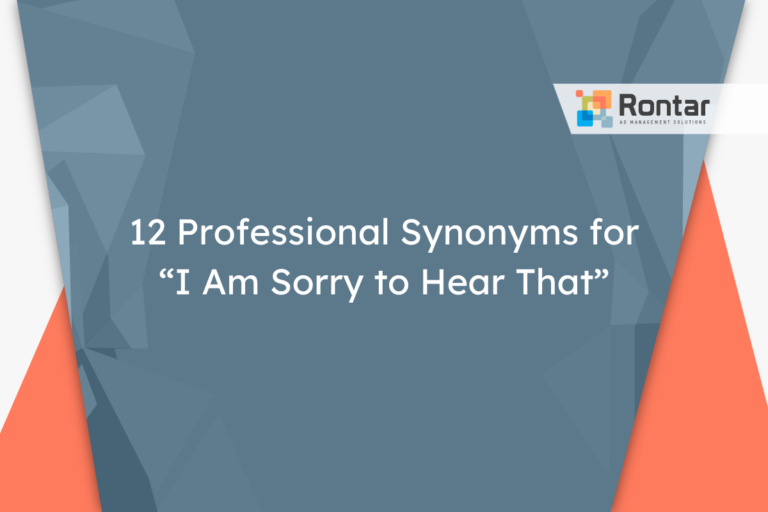10 Professional Synonyms for “Doesn’t Make Sense”

Saying “doesn’t make sense” might not always fit the bill, especially in a professional setting.
This article introduces ten alternative phrases that convey confusion or disagreement in a more polished manner. Each alternative is explored in depth, highlighting when and how to use them appropriately in various professional contexts.
Is It Professional to Say “Doesn’t Make Sense”?
The phrase “doesn’t make sense” is generally considered informal and relatively polite, but it might not always be suitable for formal business communication.
Using “doesn’t make sense” can be appropriate in internal communication or in discussions with colleagues who appreciate directness and simplicity. It is less suitable for formal reports, presentations to senior management, or external communications with clients and stakeholders, where a more polished language is expected.
Email example:
Dear Frank,
I've reviewed the recent project timeline, and there's a section regarding the deployment phase that doesn't make sense. Could you clarify how the integration testing is scheduled before the development completion?
This seems like it might lead to delays.
Best,
Emily
Pros:
- Leaves little room for misunderstanding.
- Helps in building a rapport with colleagues by using a friendly tone.
- Quickly conveys that something needs further explanation or reconsideration.
Cons:
- Might appear too direct or critical in more formal or sensitive contexts.
- While it indicates something is wrong, it doesn’t provide details about the issue.
- Without a constructive follow-up, it may not reflect a problem-solving attitude.
There might be situations where someone prefers to use a synonym or an alternative phrase to “doesn’t make sense”. This could be due to the need for a higher level of formality, a wish to soften the message, or to provide more specific feedback.
10 Other Ways to Say “Doesn’t Make Sense”
Here are ten professional alternatives to “doesn’t make sense” that can be used in a workplace environment to convey confusion or disagreement politely:
- Lacks clarity
- Is unclear
- Seems contradictory
- Is hard to follow
- Does not add up
- Is illogical
- Is puzzling
- Appears disconnected
- Is perplexing
- Is bewildering
1. Lacks clarity
This alternative is more neutral and sounds professional and polite. It suggests that the message or document isn’t clear without assigning blame to the reader or writer. This phrase is particularly useful in formal emails or reports where you want to express that more information is required without being too direct.
This expression is best used with colleagues or managers when you are seeking further explanation. It is suitable for emails, memos, or during meetings where a respectful tone is necessary.
Example:
Dear Sarah,
I believe the recent report on sales strategies lacks clarity in the section about market penetration. Could you elaborate on the methodology used?
Best,
Thomas
2. Is unclear
“Is unclear” is a straightforward, professional synonym for “doesn’t make sense”. It’s a polite way to indicate that the content could use more specific details or simplification. This choice works well in environments where clear and precise communication is valued.
It is effective when communicating with team members, project managers, or clients through email or reports. This alternative helps maintain a formal yet friendly tone, indicating that you need more information or clarity.
Example:
Dear Mark,
The timeline provided in your last update is unclear; could you specify the key milestones?
Warmly,
Linda
3. Seems contradictory
Using “seems contradictory” signals that there are opposing ideas that do not align well together. It’s a polite and professional way to point out inconsistencies without being confrontational. This phrase is more formal and suitable for written communication where you need to express concern about the coherence of information.
This is useful in scenarios where your goal is to seek clarification on conflicting information, especially in project plans or strategy documents. It’s appropriate for discussions with project teams or in communications with partners and stakeholders.
Example:
Dear James,
After reviewing the proposal, it seems contradictory in terms of project scope versus budget. Could you help clarify?
Kind regards,
Sophie
4. Is hard to follow
“Is hard to follow” implies that the information presented is confusing or overly complex. It’s a professional and polite alternative that suggests the need for simplification or a more logical structure. This phrase is especially helpful in formal communications, like emails or reports, where you’re respectfully requesting that the information be made more accessible.
This variant is particularly effective in contexts where you are dealing with detailed procedures, technical documents, or complex reports. It’s best used with colleagues, technical teams, or management when clarifying detailed or intricate information.
Example:
Dear Elena,
The process outlined for the new software implementation is hard to follow. Could you provide a simplified overview?
Thanks,
Miguel
5. Does not add up
This phrase implies that there is a logical inconsistency or something doesn’t quite match up with expectations. It is another professional and polite way to express doubt or confusion without implying fault. It’s formal enough for workplace emails and reports where you need to question or verify the accuracy of information or data.
It is best suited for financial reports, data analysis meetings, or when discussing project timelines. This expression is recommended for conversations with finance teams, data analysts, or during strategic planning sessions where accuracy is crucial.
Example:
Dear Carlos,
The projected expenses for Q2 do not add up compared to the budget allocation mentioned. Could we discuss this further?
Regards,
Nina
6. Is illogical
“Is illogical” directly addresses the reasoning behind a statement or plan that doesn’t seem rational. It is a professional, formal, and polite alternative for highlighting flaws in logic without being overly critical. This expression is suitable for scholarly discussions, technical problem-solving, or strategic planning where logic and rationale are paramount.
This phrase is particularly effective with teams in problem-solving sessions, strategy meetings, or academic discussions, where it’s important to critically analyze and question the logical foundation of arguments or plans.
Example:
Dear Helen,
The conclusion drawn from the market analysis is illogical, considering the latest consumer trends. Could we review the data together?
Best wishes,
George
7. Is puzzling
Describing something as “puzzling” indicates that it is confusing or not easily understood, but it does so in a polite and somewhat curious tone. This professional synonym invites dialogue and indicates a willingness to understand, rather than outright disagreement. It is especially appropriate for conversations where you want to encourage discussion or further explanation.
This expression is suited for interactions with colleagues or clients when there is a need to address something confusing without being confrontational. It’s preferred in emails, meetings, or in any communication where maintaining a positive, collaborative tone is important.
Example:
Dear Julia,
The rationale for reallocating the team resources is puzzling. Could you provide some background on this decision?
Sincerely,
Derek
8. Appears disconnected
“Appears disconnected” suggests a lack of coherence or relevance among parts of the presented information. This alternative is professional, formal, and reflects a polite way of indicating that the connections or transitions between ideas are not clear. It is particularly useful in critiques of proposals, reports, or plans where a seamless flow of ideas is expected.
This phrase would be effective in communications with project teams or in editorial feedback where the aim is to improve cohesion. It’s suitable for email exchanges, document reviews, or during meetings aimed at refining project scopes or content development.
Example:
Dear Victor,
The relationship between the proposed marketing strategies appears disconnected from the target demographic analysis. Can we discuss this in detail?
Cheers,
Rachel
9. Is perplexing
Using “is perplexing” communicates that something is bewildering or difficult to understand, doing so in a way that is both professional and polite. It indicates a need for further explanation while opening the door for clarification. This term is suitable in formal contexts where you wish to convey confusion without negative implications.
This alternative is well-suited for academic or technical environments where clarity is crucial but the information presented is complicated. It’s recommended for engaging with experts, professors, or colleagues when discussing complex topics requiring elucidation.
Example:
Dear Reggie,
The methodology used in the recent study is perplexing; could you provide a clearer explanation?
Thank you,
Anita
10. Is bewildering
“Is bewildering” implies a high level of confusion or astonishment at the information provided. While it is professional and polite, it also conveys a significant need for clarification. It is a formal choice, suitable for situations where the content in question is incredibly confusing or surprising.
This expression is best used when discussing highly technical or complex matters that require a detailed breakdown to understand fully. It’s particularly effective in emails or meetings with specialists or when consulting on intricate projects or research findings.
Example:
Dear Fiona,
The recent changes to the compliance procedures are is bewildering. Could we set up a meeting to go over these in detail?
Kind regards,
Alex
Final Thoughts
Choosing the right way to express that something doesn’t make sense can greatly impact how your message is received in a professional setting. The ten alternatives provided offer a range of more polite and clear options for various situations. Each phrase presents a different tone and level of formality, making it easier to find the right fit for your specific needs.






